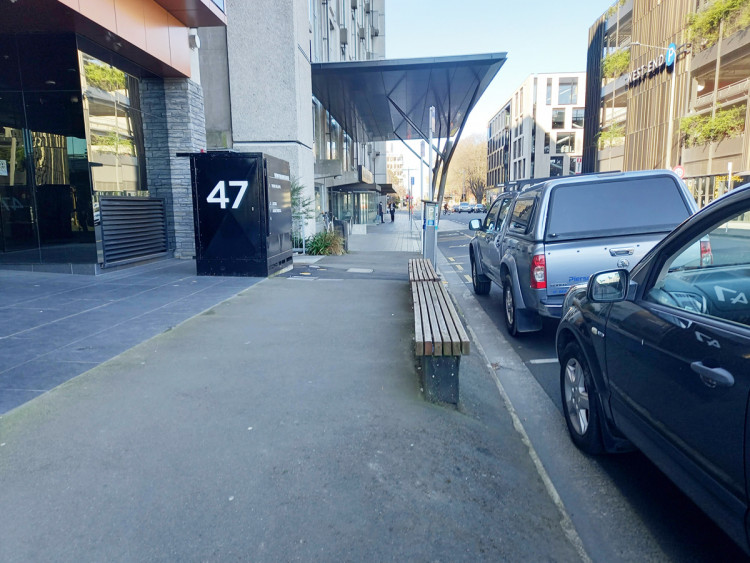Where land next to the footpath’s frontage zone has a significant downwards crossfall (greater than 25 percent) or a vertical drop of more than one metre, pedestrians should be prevented from straying from the through path by, for example:[1] [2]
Appendix B of the Bridge Manual provides further guidance for the latter bullet point.
Waka Kotahi NZ Transport Agency bridge manual
For other slopes less than 25 percent or vertical drops more than a normal kerb height, consider treatments such as soft landscaping or planter boxes to highlight the hazard (see photograph below). Refer to the requirements for fence barriers at batters and vertical drops in Austroads Guide to Road Design Part 6A for more information.[5] The Austroads guidance is for bicycle paths but is considered relevant to footpaths as well.

Seating prevents pedestrians walking near the sloped footpath edge, Christchurch. (Photo: Jeanette Ward)
[1] Ministry of Business, Innovation and Employment. Building Code Compliance: Section F4: Safety from falling(external link)
[2] Ref 166 from PPDG, now updated as: Washington State Department of Transportation. 2020. Design manual(external link). Washington. Washington State Department of Transportation.
[3] Source: Washington State Department of Transportation. Inclusive mobility(external link) Note that the 1200mm is also in RTS14 as the preferred dimension for width of hazard warning areas. It is also the minimum lateral clearance to a barrier for pedestrians (4ft) as outlined in their Design Manual(external link)
[4] [5] Austroads. (2021). Guide to Road Design Part 6A: Paths for Walking and Cycling(external link) (AGRD06A-17)